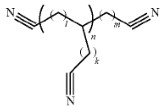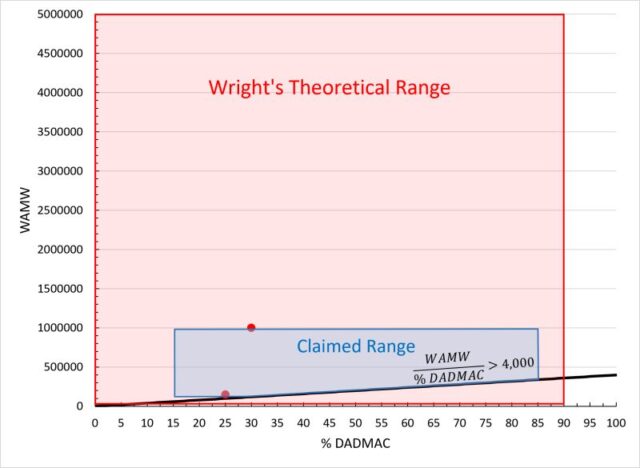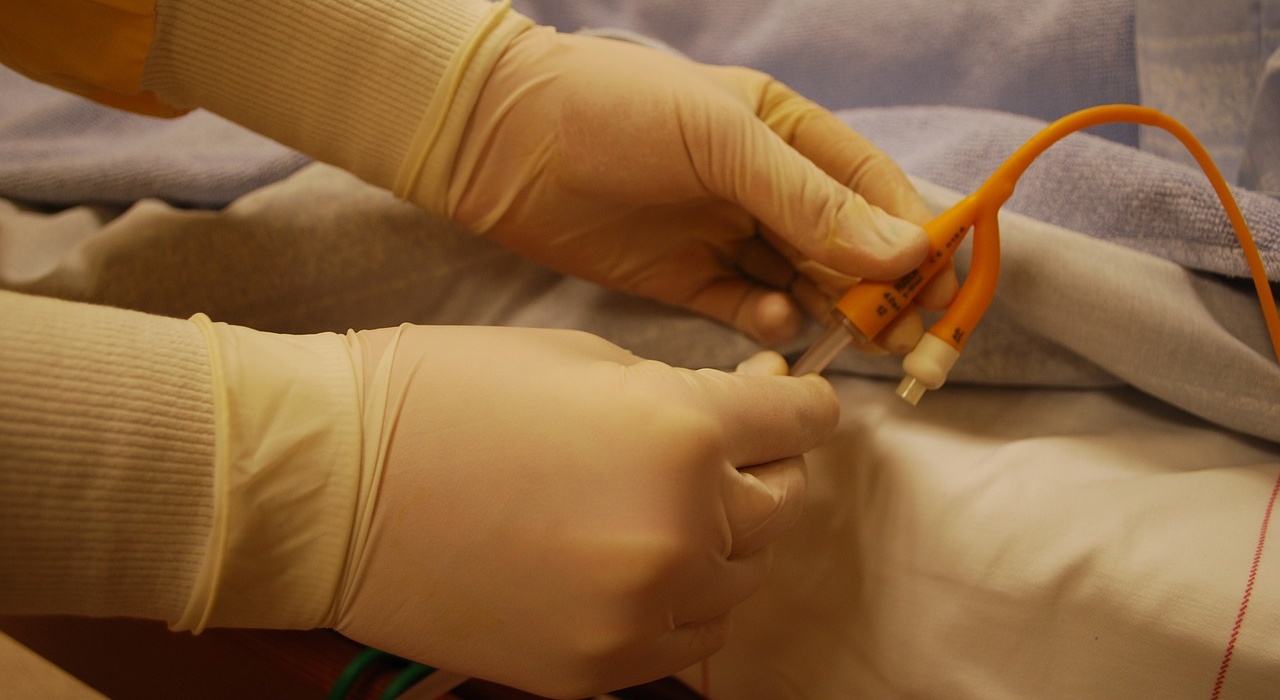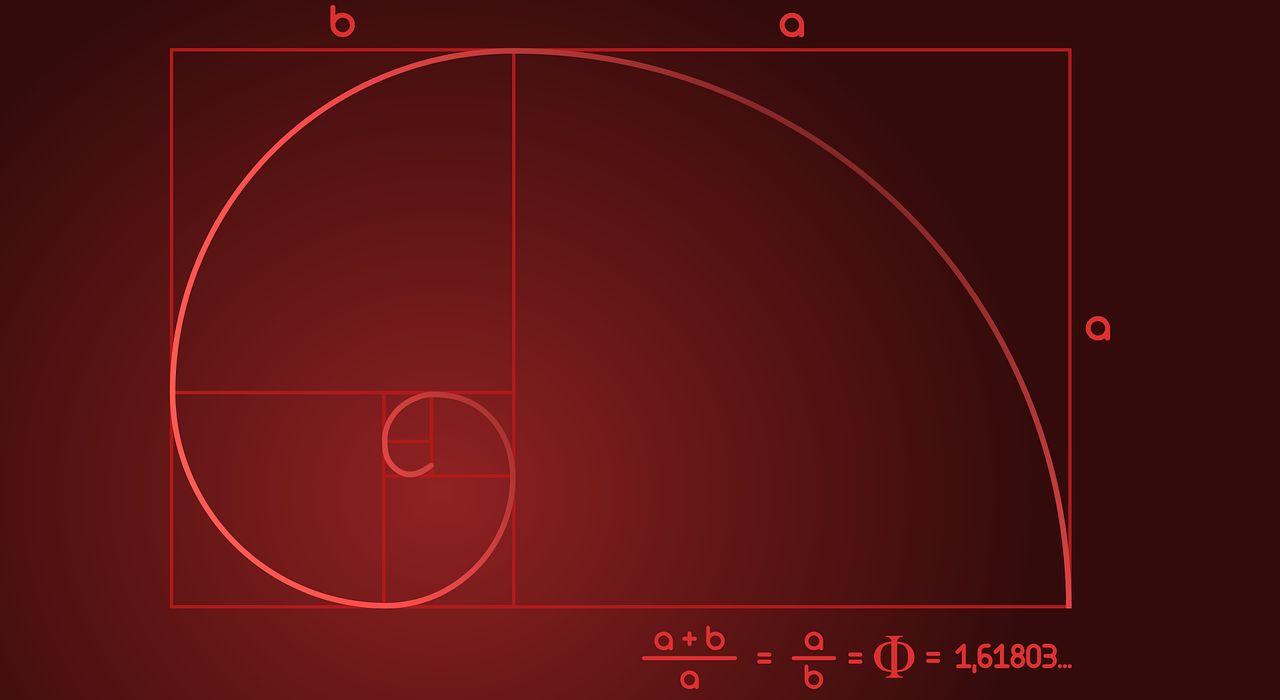2022年5月19日,pre-AIAの§102(a)の引例が“他人”によるものであるかどうかが争点になったケースについて,CAFCが判決を出しています (Google LLC v. IPA Technologies Inc., (Fed. Cir. May 19, 2022))。
Last month, in Almirall, LLC v. Amneal Pharm., No. 2020-2331 (Fed. Cir. Mar. 14, 2022) the Federal Circuit affirmed the Board’s holding of obviousness in an inter partes review. In Almirall the main issue in the case was the absence, in the primary reference, of the claimed gelling agent.
Petitioner, in asserting obviousness, used a secondary reference that disclosed both the claimed gelling agent and the gelling agent of the primary reference in a “laundry list” of ten broad types, or classes, of gelling agent useful in the secondary reference. Importantly, Petitioner also included substantial expert testimony characterizing the claimed gelling agent and the gelling agent of the primary reference as being “closely related,” as capable of being “interchangeably used” in the claimed formulations “in the same concentration range,” that such a substitution was “routine and predictable,” and that one of ordinary skill in the art “would not have expected any incompatibilities.”
Patentee, unable to successfully counter this mountain of evidence, was left to argue at the margins, and focused on the non-overlapping concentration ranges of gelling agents used in the primary and secondary references. However, the Court was having none of it:
Ultimately, despite Almirall’s attempts to argue otherwise, this case does not depend on overlapping ranges. It is simply a case of substituting one known gelling agent for another. Each may be effective at a different concentration in different formulations, but that is just a property of the particular known material, subject to conventional experimentation.
Takeaway: The Almirall case is interesting because the initial “hook” that led to the finding of obviousness was one that Examiners use in rejecting claims all the time: a secondary reference with an expansive laundry list of agents that includes both the claimed agent and the agent of the primary reference. The difference between the inter partes review in Almirall and regular prosecution, however, is that during prosecution the Examiner simply alleges interchangeability based on the common listing, without more, while in Almirall Petitioner submitted substantial evidence regarding combinability, interchangeability, and expectation of success. The Almirall case thus provides applicants with a good example of the type of evidence, albeit in the reverse, to submit in traversing such rejections during prosecution.
Judges: Lourie, Chen, Cunningham
2022年2月10日、CAFCは、claim 解釈において、On sale bar の判断において,見積書であっても商業的なオファーであると解釈される場合があるとの判決をしました (Junker v. Medical Components, Inc. (Fed. Cir. Feb. 10, 2022))。
2021年7月22日、CAFCは、Teach awayの要件について言及する判決をしました (The Chemours Company FC, LLC v. Daikin Industries, Ltd. (Fed. Cir. July 22, 2021))。
In Google LLC v. NavBlazer, LLC, the Patent Trial and Appeal Board (“Board”) declined to institute inter partes review of U.S. Patent No 9,075,136 (“the ’136 patent”). IPR2021-00502, Paper 6 (mailed Aug. 5, 2021).
The ’136 patent is directed to an apparatus that provides a vehicle user with information such as road and traffic conditions. Each of the independent claims of the ’136 patent required an apparatus that “automatically detects a departure of the vehicle from the first travel route, and … identifies a second travel route on which the vehicle can travel to the destination in response to the detected departure of the vehicle from the first travel route.”
The petitioner argued that the claimed dynamic rerouting functionality would have been obvious over the combination of: a primary reference (Behr) that disclosed a base unit that calculated route guidance in response to a query using an up-to-date database located in the base unit and then transmitted the response to a display unit; and a secondary reference (Schreder) that disclosed an automobile equipped with an RF GPS navigation system and RF receivers that monitored updated traffic condition information for dynamic rerouting guidance.
According to the Petitioner, it would have been obvious to include Schreder’s dynamic rerouting functionality within the base unit of Behr so that when the base unit detected a deviation from a specified route, it would identify a new route. The Petitioner further argued that an artisan would have been motivated to make this modification because Behr teaches that guidance systems that are self-contained within a vehicle, such as the system disclosed in Schreder, suffered from many drawbacks, including the need for large data storage capabilities onboard the vehicle.
The Board was not persuaded, stating:
We disagree with Petitioner that reducing vehicle-side processing and data storage justifies modifying Behr’s navigation system to include Schreder’s dynamic rerouting feature. Petitioner’s proffered rationale justifies where a skilled artisan would have located Schreder’s rerouting functionality—in Behr’s central system—but does not address why a skilled artisan would have added that functionality to Behr in the first place. Given this deficiency, we find that Petitioner has not produced the required ‘articulated reasoning with some rational underpinning to support the legal conclusion of obviousness.’
Absent an articulated reason for “why” an artisan would have made the modification, the Board found that the Petitioner failed to carry its burden to show a reasonable likelihood of prevailing on any claim, and thus declined to institute inter partes review of the ’136 patent.
Takeaway: In Google v. NavBlazer, the Petitioner arrived at the claimed subject matter but neglected to explain why the modification would have been obvious in the first place. Unlike anticipation, obviousness requires a story, and the most important part of that story is why a skilled artisan would have been motivated to modify the primary reference to arrive at the claimed subject matter. Without “the why” (i.e., a reason), the obviousness rationale collapses into a hindsight-guided combination of elements. Therefore, when challenging the claims of patent for obviousness it is critical to supply the Board with “the why” of the story you are telling.
Judges: K. Turner, G. Baer, A. Moore
In a recent IPR, the PTAB found a chemical formula in the claims not to be fully supported by a provisional application, opening the claims to anticipatory prior art. IPR2020-00349, Paper 53 (PTAB July 15, 2021).
The patented claims related to a battery comprising an additive represented by Chemical Formula 1:

where each of k, l and m is independently an integer of 0 to 20; each of k, l and m are different from each other such that the compound has an asymmetric structure; and n is an integer of 1 to 7.
Chemical Formula 1 itself was identical between the provisional and nonprovisional applications. However, the nonprovisional application added the following statement: “For example, the compound represented by Chemical Formula 1 may be 1,3,6-hexane tricarbonitrile, 1,3,5-hexane tricarbonitrile, or 2,3,6-hexane tricarbonitrile.”
The petitioner argued that a skilled artisan would not have understood the originally disclosed Chemical Formula 1 to encompass the second and third of these exemplary compounds. In particular, 1,3,5-hexane tricarbonitrile does not have a cyano group at position 6 of the hexane backbone. Thus, to map this compound onto Chemical Formula 1 would require a methyl substituent on the main carbon backbone of Chemical Formula 1. Similarly, 2,3,6-hexane tricarbonitrile does not have a cyano group at position 1 of the hexane backbone. To map this compound onto Chemical Formula 1 also would require a methyl substituent on the main carbon backbone of Chemical Formula 1.
The petitioner argued that Chemical Formula 1 is a “bond-line formula” which would be understood in the provisional application to exclude substituents from the backbone -CH2– moieties. The petitioner argued that the inclusion of 1,3,5-hexane tricarbonitrile and 2,3,6-hexane tricarbonitrile as examples of compounds of Chemical Formula 1 in the nonprovisional application broadened the meaning of Chemical Formula 1 to include substituents on the backbone. Because of this, the petitioner argued that the scope of the patented claims was not fully supported by the provisional application.
The PTAB agreed with the petitioner. The PTAB was not persuaded by the patent owner’s argument that the possibility of substituents was implied in Chemical Formula 1 in the provisional application. The PTAB noted other instances within the provisional application where R groups were used to identify optional substituents, and found that “[w]hen the inventors…intended to disclose a chemical formula that permitted substituents to be optionally added, they knew how to do so.”
Since the priority chain from the patent to the provisional application was broken, the PTAB found the claims to be anticipated by prior art that could not be antedated.
Takeaway: Innovation is dynamic, and often continues between the filing of a priority (e.g. provisional) application and a nonprovisional application. New material that is developed within this time generally can be included in the nonprovisional application. Caution is required, however, since the new material can raise an issue of written description support, breaking the priority chain and opening the application or patent to additional prior art.
Judges: Crumbley, Kokoski, McGee
Ratios can be useful when claiming a subset of two well-known components or variables, particularly when the subset (defined by a ratio) provides a new and useful result. However, when the prior art teaches broad ranges for the individual components or variables, it is common for examiners and petitioners to argue obviousness based on overlapping theoretical ranges of the ratio derived from selecting the maximum and/or minimum values for each of the components or variables. The issue with this is approach is that the prior art may not direct a person of ordinary skill in the art (POSA) to the particular selections required to arrive at the claimed ratio. SNF S.A. v. Solenis Technologies is illustrative. IPR2020-01730, Paper 10 at 4 (PTAB April 22, 2021).
In SNF S.A., the challenged claims required a glyoxalated copolymer (G-PAM) obtained by reacting:
[A] 5–40 parts of glyoxal; and
[B] 60–95 parts of a cationic copolymer including:
[b1] ~15–85 wt% of diallyldimethylammonium halide monomer (DADMAC); and
[b2] ~85–15 wt% of acrylamide monomer,
the cationic copolymer having a weight average molecular weight (WAMW) of 120,000 to 1,000,000 Daltons, and
a ratio of the WAMW to the weight % of the DADMAC being greater than 4000 Daltons/weight%.
According to the background of the patent, the patentee found that the ranges of the WAMW and % DADMAC in combination with the claimed ratio thereof improved water drainage during processing and increased the strength of paper or boards treated with the G-PAM.
The petitioner, SNF S.A., argued obviousness based on three different primary references: Wright, Lu, and Dauplaise. The petitioner admitted that none of the cited references disclosed a ratio between WAMW and % DADMAC. To remedy this deficiency, the petitioner presented two arguments.
The petitioner’s first argument was that a POSA would have selected values of the WAMW and % DADMAC disclosed by each of the references to arrive at the ratio required by the claims. Specifically, with respect to the Wright reference, the petitioner argued “the ratio of 150,000 WAMW to 25 wt.% DADMAC, as both taught by Wright ’343, is 6,000 [and] … the ratio of 1,000,000 WAMW to 30 wt.% DADMAC is 33,333.” The petitioner supported this assertion with an expert declaration that similarly stated it would have been “obvious” and “routine” to select molecular weights of 150,000 (an upper endpoint of the preferred range) and to select DADMAC concentrations of 25% and 30% (preferred concentrations).
For ease of discussion, the scope covered by the claims (shaded blue box) relative to the scope disclosed by the Wright reference (shaded red box) and the two particular data points of the Wright reference relied on by the petitioner (red dots) are shown graphically below and here:

As shown above, Wright’s broad WAMW range of 30,000 to 5,000,000 and broad % DADMAC range of 0.1–90 wt% cover a WAMW/%DADMAC ratio of 4,000, as they theoretically cover ratios from 333 to 5×107. And although one of the ratios derived by the petitioner (lower red dot) was derived from a preferred amount of DADMAC (25 wt%) and an upper endpoint of a preferred WAMW range (150,000), the Board found:
Petitioner, however, never explains how or why a person of ordinary skill in the art would have been led to select the value ‘150,000 WAMW,’ or ‘25 wt.% DADMAC,’ or any of the specific values it uses to calculate the claimed ratio. Nor does Petitioner direct us to any disclosure in the prior art showing an embodiment having the specific values used in Petitioner’s calculations.
…
Absent explanation from Petitioner, it appears that Petitioner picked the specific values it used to calculate a ratio from broad, unrelated ranges of WAMW and % DADMAC disclosed in the prior art simply because they combine to produce a ratio that meets the ratio recited in the claims of the ’320 patent. This suggests Petitioner relied on hindsight in forming its challenges. Metalcraft of Mayville, Inc. v. The Toro Co., 848 F.3d 1358, 1367 (Fed. Cir. 2017) (‘[W]e cannot allow hindsight bias to be the thread that stitches together prior art patches into something that is the claimed invention.’).
This use of hindsight is not excused by the mere fact that the specific values combined to produce the claimed ratio fall within the ranges disclosed in the prior art.
The other two primary references relied on by the petitioner, Lu, and Dauplaise, suffered similar defects.
The petitioner’s second argument was that “a POSA would have arrived at the ratio using routine experimentation to optimize result-effective variables, as guided by the art.” The Board also rejected this argument.
First, the Board found that a POSA would not have optimized the ratio itself because “there is no evidence that skilled artisans knew that the claimed ratio of WAMW to % DADMAC was a parameter of any importance or one worth optimizing.” That is, the ratio was not a result-effective variable.
Second, the Board found that there was no persuasive evidence to support a conclusion that independently optimizing WAMW and % DADMAC would result in a polymer having the claimed ratio rather than one of the many ratios falling outside the scope of the claims. Again, the Board emphasized the innumerable combinations of values. But it seemed that the Board was more persuaded by the fact that there was evidence of polymers outside the scope of the claim exhibiting the same properties as those having the claimed ratio such that optimization could equally result in a copolymer having a ratio outside the claim. Ultimately, the Board concluded that the evidence did not support the petitioner’s assertion that independent optimization would lead to the claimed ratio.
For the foregoing reasons, the Board concluded that the petitioner failed to carry its burden and declined to institute the IPR.
Takeaway: When facing an office action or post-grant petition in which a claimed ratio is alleged to be obvious based on the selection or optimization of the components making up the numerator and denominator, you should first determine whether the ratio itself is a result-effective variable. If not, the next step is to determine whether there is an embodiment that discloses values for the numerator and denominator that would result in the claimed ratio. As shown in SNF S.A., the fact that specific values can be combined to produce the claimed ratio is insufficient by itself when there are innumerable combinations of values. If neither of these applies, the final step is to determine whether the prior art teaches a reason to optimize the numerator and denominator in a manner that would result in the claimed ratio.
Judges: C. Crumbley, J. Abraham, D. Cotta
2021年4月7日、CAFCは特許のライセンシーは、その特許に関するIPRの決定について控訴するためのArticle III standing (原告適格) を有さない場合があるとの決定をしました (Apple Inc. v. Qualcomm Incorporated (Fed. Cir. Apr. 7, 2021))。
When evaluating whether a Petitioner’s inter partes review petition is based on matters previously presented to the Office, the Patent Trial and Appeal Board (“the Board”) uses the following two-part framework:
-
- determining whether the same or substantially the same art previously was presented to the Office or whether the same or substantially the same arguments previously were presented to the Office; and
- if either condition of the first part of the framework is satisfied, determining whether the petitioner has demonstrated that the Office erred in a manner material to the patentability of challenged claims.
See Advanced Bionics, LLC v. Med-El Elektromedizinische Geräte GmbH, IPR2019-01469, Paper 6 at 7 (PTAB Feb. 13, 2020) (precedential) (“Advanced Bionics”). In making this determination the Board considers several non-exclusive factors, which are outlined in Becton, Dickinson & Co. v. B. Braun Melsungen AG, IPR2017-01586, Paper 8 (Dec. 15, 2017) (precedential as to § III.C.5, first paragraph) (“Becton, Dickinson”).
In Biocon Pharma Ltd. v. Novartis Pharmaceuticals Corp., IPR2020-01263, Paper 12 (PTAB Feb. 16, 2021) (“Biocon Pharma”), the Petitioner presented two grounds of unpatentability that each included a reference (EP ’072 and the ’996 patent) that was cited on an IDS but not applied in any rejection by the Examiner. According to the Petitioner, citation of a reference on an IDS was inconsequential because the Board “has consistently declined to exercise its discretion under § 325(d) based on the mere citation of references in an [Information Disclosure Statement (IDS)] that were not applied by the Examiner.” The Board disagreed.
Applying the first part of the framework, the Board found that the record showed the Examiner signed an IDS listing both of EP ’072 and the ’996 patent. The Board also pointed out the precedential Advanced Bionics decision states that “[p]reviously presented art includes art made of record . . . such as on an Information Disclosure Statement (IDS).” Biocon Pharma, 9 (quoting Advanced Bionics, 7–8). Consequently, the Board rejected the Petitioner’s argument that it should decline to exercise discretion under § 325(d) because these references “were not applied by the Examiner.”
Having found that the “same or substantially the same prior art” was presented previously to the Office, the Board did not assess whether the “same or substantially the same arguments” were presented previously to the Office before moving to the second part of the framework. See id., f.n. 4 (citing Advanced Bionics, 20).
Under the second part of the framework, the Board noted that “[i]f . . . the petitioner fails to make a showing of material error, the Director generally will exercise discretion not to institute inter partes review.” Advanced Bionics, 8–9. This is similar to district court litigation where a challenger relying on previously considered references “has the added burden of overcoming the deference that is due to a qualified government agency presumed to have properly done its job, which includes one or more examiners who are assumed to have some expertise in interpreting the references and to be familiar from their work with the level of skill in the art and whose duty it is to issue only valid patents.” Ultra-Tex Surfaces Inc. v. Hill Brothers Chemical Co., 204 F.3d 1360, 1367 (Fed. Cir. 2000) (quoting American Hoist & Derrick Co. v. Sowa & Sons, Inc. 725 F.2d 1350, 1359 (Fed. Cir. 1984)).
Here, the petitioner argued that the Examiner erred because he found the patentee’s showing of synergistic results unexpected. However, the patent owner argued, and the Board agreed, that the prior art and evidence of record, which included a Declaration under 37 C.F.R. § 1.132, supported the Examiner’s finding of unexpected results. Accordingly, the Board exercised its discretion under § 325(d) and denied institution of trial.
Takeaway: No matter which side of an IPR petition you are on, it is important to note that the first part of the Advanced Bionics two-part framework may be satisfied when the references relied on in the IPR petition were merely cited on an IDS during prosecution. Thus, the Board’s discretion to institute an IPR based on references that were cited on an IDS during prosecution but never applied in a rejection will turn on the petitioner’s ability to demonstrate a material error by the Examiner.
Judges: E. Franklin, R. Pollock, K. Sawert
CAFCは、最近、IPRの決定に対する控訴で、特許権者が、連邦地裁で非侵害のサマリージャッジメントが出た後控訴しない旨の宣誓書を提出したので、争いはmootであるとし、これを却下しました(ABS Global v. Cytonome/ST (Fed. Cir. 2021))。










